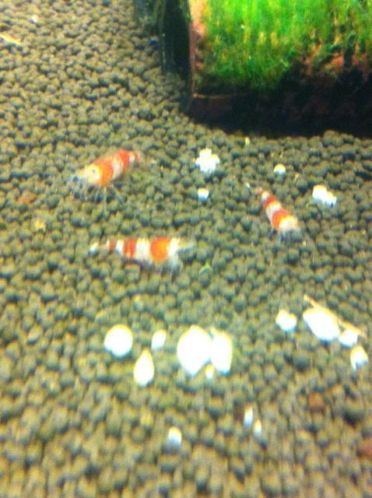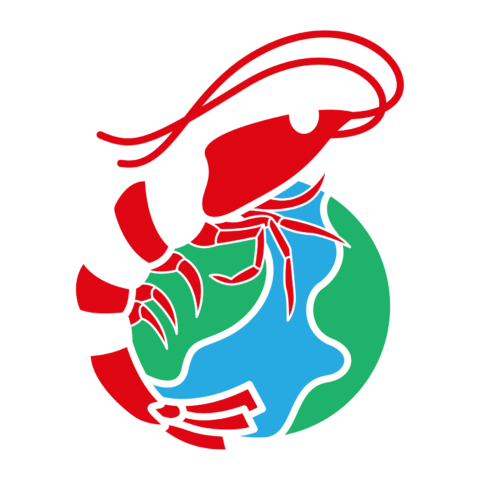Crystal red shrimp aren’t that difficult to manage if you have the correct tank settings and give them a balanced diet. While they are normally quite active, sometimes your crystal red shrimp may suddenly become inactive and will sit still in the tank. This is often an indication that something is wrong.
Your crystal red shrimp may be inactive because of other fish, an improper diet, water changes, or when they’re placed in a new environment. They may also be reacting to strange objects in the tank since crystal red shrimp are very sensitive.
The rest of this article will discuss why your crystal red shrimp may be inactive and how to resolve this issue. I’ll also give you tips to take better care of your shrimp.

What Causes Crystal Red Shrimp To Be Inactive?
While crystal red shrimp aren’t as hyperactive as some other fish, they aren’t supposed to be inactive. When your shrimp become inactive, they may sit in a corner of the aquarium, have a reduced appetite, or hide most of the day.
Crystal red shrimp may become inactive when they are under stress due to other fish or a change in environment. Since they are more sensitive than other shrimp species, they are more likely to be affected by slight changes in water temperature or pH levels.
Let’s go through some of the most common reasons why crystal red shrimp may be inactive.
Lack of Nutrients
An improper diet is often one of the main causes of a loss of appetite and laziness. Shrimp are very active while feeding and will occasionally break into scuffles. However, if they are reluctant to go towards the food, it could be that you aren’t feeding them the right diet.
If you aren’t very experienced at keeping shrimp, it’s better to feed them specialized food from the pet store. Shrimp are omnivores and will eat anything, but most of their diet should consist of plant matter.
Change in Water Temperature
The ideal water temperature for shrimp is around 70-78 degrees °F (21-25.5 °C), which is roughly around room temperature. However, shrimp can still be active in cooler waters, and there’s no need to heat the water in winter if the tank is indoors.
However, if the water temperature is too high, the shrimp will become inactive as they aren’t made for warm water. The same is true if the temperature drops too quickly.
Incorrect Water Nutrient Composition
Always check the nitrates and other nutrients in the tank if your crystal red shrimp become inactive. Crystal red shrimp are more likely to notice slight changes in the water’s mineral composition or pH level. They thrive in water with a pH of 6.2-7.2 and will become inactive in more acidic water. Check this guide on how to adjust your aquarium’s pH levels.
Other Fish in the Tank
While shrimp will usually cohabitate with other fish, you’ll have to be careful of which fish you place in their tank. Even if the fish don’t prey on shrimp, they may compete for food or simply spook the crystal red shrimp.
So, if you’re placing your shrimp in a new tank, give them time to get used to the environment before adding other fish. If you can, try to place the shrimp in a separate tank.
What Should You Feed Crystal Red Shrimp?
If you want to keep your crystal red shrimp active, you should give them a balanced shrimp diet. However, you can’t feed them the same foods as other fish as shrimp can only eat very delicate foods.
The best foods for crystal red shrimp are pieces of algae, shrimp pellets, and algae wafers. You could also leave soft aquatic plants in the tank that the shrimp naturally eat. If you want the crystal red shrimp to maintain their color, then get them special shrimp food.
Never overfeed your shrimp as it may result in an overly dirty tank and cause a buildup of nitrates which can harm the shrimp. Additionally, you should never remove the shredded shells that they shed during molting as they eat these to get more calcium.
Final Thoughts
While crystal red shrimp are great pets to have in your home aquarium, they aren’t easy for beginners to manage. If you notice that they are less active than usual, it’s a sign that something’s wrong with their diet or environment.
To resolve this problem:
- Ensure you’re feeding them the right food and in the right amount.
- Try moving other fish out of the tank and see how they respond.
- If there’s an issue in the water’s nutrient or pH levels, use nutrient and pH stabilizers to keep the tank’s water more balanced.
Sources
- Aquatic Community: Crystal red shrimp
- Acuario Pets: 3 Signs Of Stress In Shrimps You Should Know
- Aquarium Advice: Crystal Red Shrimp shy or sick?
- Fish Laboratory: Crystal Red Shrimp (Caridina cantonensis): The Care Guide
- Algone: How to Adjust the pH in Your Aquarium
- Pet Food Guide: Feeding Crystal Red Shrimp
Recent Posts
How Do Freshwater Shrimps Live? Freshwater shrimp are fascinating creatures that play a crucial role in aquatic ecosystems. They help maintain water quality by consuming algae and decomposing...
How Many Freshwater Shrimp Per Gallon? 4 Key Factors Freshwater shrimp are popular additions to aquariums, but many hobbyists wonder: how many shrimp can comfortably live in a gallon of water? The...

